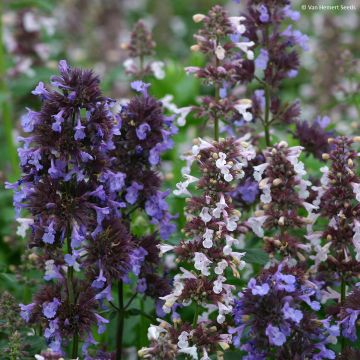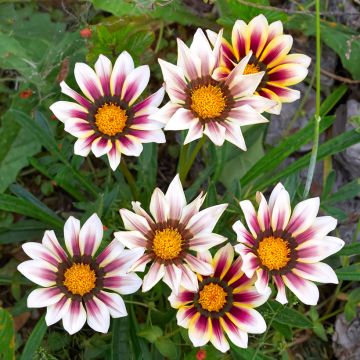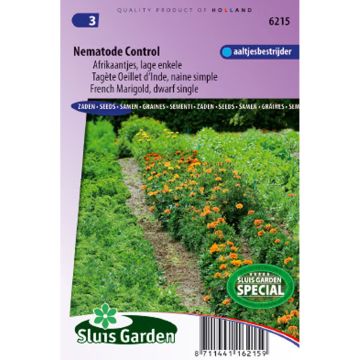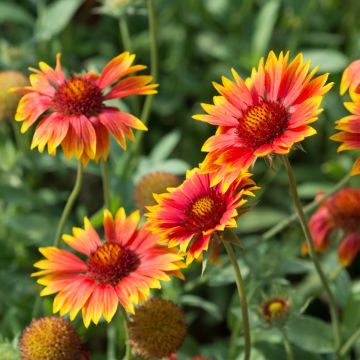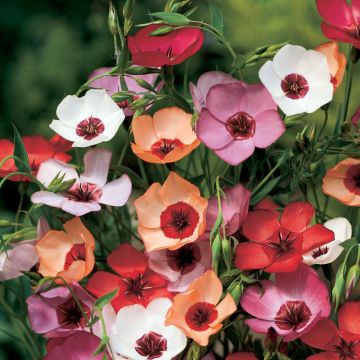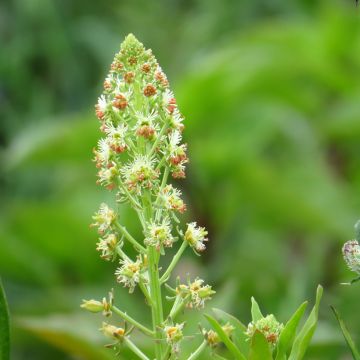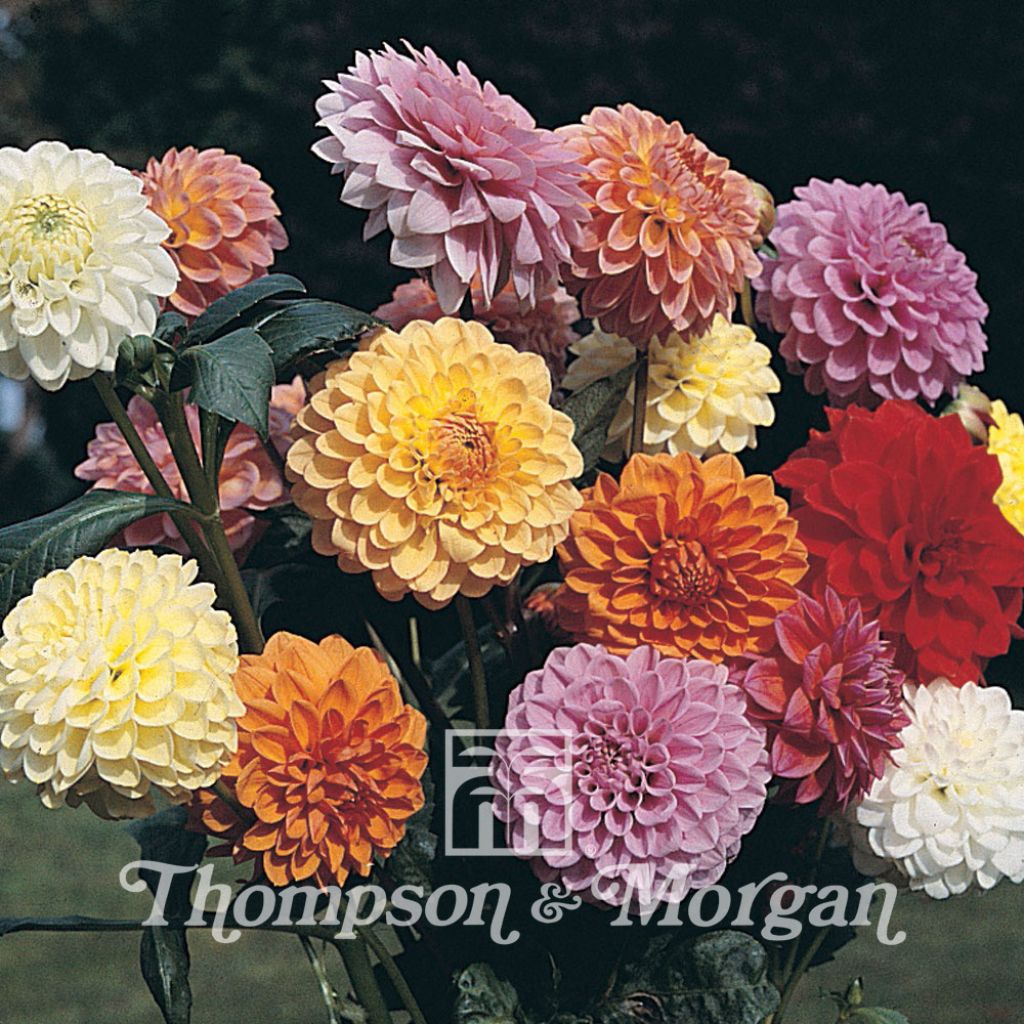

Dahlia Showpiece Mixed Hybrids
Dahlia Showpiece Mixed Hybrids Seeds
Dahlia x variabilis Showpiece Mixed Hybrids
This item cannot be shipped to the selected country
Dispatch by letter from €3.90
More information
Schedule delivery date,
and select date in basket
This plant carries a 6 months recovery warranty
More information
We guarantee the quality of our plants for a full growing cycle, and will replace at our expense any plant that fails to recover under normal climatic and planting conditions.
Seed-only orders are dispatched by sealed envelope. The delivery charge for seed-only orders is €3.90.
Does this plant fit my garden?
Set up your Plantfit profile →
Description
This mixture of Dahlia Showpiece Mixed Hybrids brings together decorative dahlias with often very double flowers, like large pompoms in rich, bright and varied shades. Some of the varieties that make up this mix are among the most beautiful and have been awarded. Derived from seeds, these plants with an upright habit equal the varieties traditionally cultivated vegetatively and flower in the year of sowing. Floriferous and robust, they are perfect for borders or in bouquets.
Dahlias belong to the asteraceae family, they are originally from the high plateaus of Mexico. At present, the some 20,000 horticultural varieties obtained by humans have invaded, to our great pleasure, gardens all over the world.
The 'Showpiece Mixed Hybrids' variety is a decorative dahlia, it will reach 1 m (3.3 ft) in height, with a width of 50 cm (19.7 in). Plants from this selection often show very double flowers. For this reason, it can also be classified as a pompom dahlia: it is a horticultural category defined by the shape of the flower. In this group, the coloured ligules of the head are countless, forming a ball-shaped inflorescence. The flowers of this selection are 8 cm (3.1 in) in diameter, they are violet, red, lavender, yellow, carmine, pink or salmon, in an infinite gradient. The golden heart of the flower only appears late, just before wilting. The flowering period is from July to October. The habit is upright, it is sometimes necessary to stake the plants at the end of the season. The very branching stems are hollow and the leaves are opposite, pinnately divided into 3 or 5 very toothed lobes. The leaves and stems are purple.
To promote flowering again, make sure to remove faded flowers, or even better, regularly make large colourful bouquets by combining it with other varieties. In the back of the border, this Dahlia will form colourful spots in the company of Echinaceas for example, which bloom at the same time, as well as Daylilies or Asters. With Sedums and Miscanthus, it will also make a lovely original mix.
As a star plant for borders and herb gardens, Dahlias confidently accompany the most beautiful flowers but are also appreciated alongside vegetable plants. In Mexico, this tuberous plant was first cultivated as a root vegetable for consumption. But its poor taste qualities have relegated it to the rank of ornamental plant. Since then, the interest in their beautiful exuberance has never waned.
Report an error about the product description
Flowering
Foliage
Plant habit
Botanical data
Dahlia
x variabilis
Showpiece Mixed Hybrids
Asteraceae
Cultivar or hybrid
Other Thompson and Morgan seeds
Planting and care
Sow in February-March, in trays or pots in a special seed compost that you place in a mini-greenhouse or in a warm place, to maintain a temperature of 18 to 20°C. The seeds will be buried under 1.5 mm (0.1 in) of fine compost. Germination will occur within 7 to 21 days. Transplant the young plants into 8 cm (3.1 in) pots when they are large enough to be transplanted, taking care not to damage the roots.
Gradually harden off these seedlings and transplant them when all risk of frost is gone, spacing them 30 cm (11.8 in) apart.
Plant Dahlias in full sun as soon as the last frost has passed, rich, fresh, and well-drained soils are perfect. However, stagnant moisture would promote tuber rot. Feel free to amend the soil with compost and sand if necessary. Work the soil deeply and enrich it, for example, with crushed horn or dehydrated blood. At the end of planting, water once abundantly and then regularly renew this watering during the first 6 weeks to help with rooting.
Dahlias are sensitive to cold, they need to be overwintered. In November, the first frost will blacken the foliage, it's time to dig them up. Carefully unearth the tubers. Remove as much soil as possible. Let the foliage dry, so that the tubers can replenish their reserves. Then cut the stems to 10 cm (3.9 in). Spread your bulbs in a box on newspaper. Store them protected from frost in a dry, cool, and dark place, such as a frost-free garage or an attic, for example. In southern regions, close to the coast, which experience only a few days of frost per year, it is possible to leave them in place. In this case, simply cover the ground with a layer of leaves or straw as protection.
This tall Dahlia, with its hollow stems, does not withstand wind or heavy rain well. To overcome this drawback, you can stake it, but let's admit it, it is not very aesthetic. On the other hand, by pinching the stems early or removing the axillary flower buds, you will spread out the habit of the plant, which will offer more resistance to bad weather. At the same time, you channel the flow of sap to a single flower, which will become larger and stronger.
Sowing period
Intended location
This item has not been reviewed yet - be the first to leave a review about it.
Flower seeds
Haven't found what you were looking for?
Hardiness is the lowest winter temperature a plant can endure without suffering serious damage or even dying. However, hardiness is affected by location (a sheltered area, such as a patio), protection (winter cover) and soil type (hardiness is improved by well-drained soil).

Photo Sharing Terms & Conditions
In order to encourage gardeners to interact and share their experiences, Promesse de fleurs offers various media enabling content to be uploaded onto its Site - in particular via the ‘Photo sharing’ module.
The User agrees to refrain from:
- Posting any content that is illegal, prejudicial, insulting, racist, inciteful to hatred, revisionist, contrary to public decency, that infringes on privacy or on the privacy rights of third parties, in particular the publicity rights of persons and goods, intellectual property rights, or the right to privacy.
- Submitting content on behalf of a third party;
- Impersonate the identity of a third party and/or publish any personal information about a third party;
In general, the User undertakes to refrain from any unethical behaviour.
All Content (in particular text, comments, files, images, photos, videos, creative works, etc.), which may be subject to property or intellectual property rights, image or other private rights, shall remain the property of the User, subject to the limited rights granted by the terms of the licence granted by Promesse de fleurs as stated below. Users are at liberty to publish or not to publish such Content on the Site, notably via the ‘Photo Sharing’ facility, and accept that this Content shall be made public and freely accessible, notably on the Internet.
Users further acknowledge, undertake to have ,and guarantee that they hold all necessary rights and permissions to publish such material on the Site, in particular with regard to the legislation in force pertaining to any privacy, property, intellectual property, image, or contractual rights, or rights of any other nature. By publishing such Content on the Site, Users acknowledge accepting full liability as publishers of the Content within the meaning of the law, and grant Promesse de fleurs, free of charge, an inclusive, worldwide licence for the said Content for the entire duration of its publication, including all reproduction, representation, up/downloading, displaying, performing, transmission, and storage rights.
Users also grant permission for their name to be linked to the Content and accept that this link may not always be made available.
By engaging in posting material, Users consent to their Content becoming automatically accessible on the Internet, in particular on other sites and/or blogs and/or web pages of the Promesse de fleurs site, including in particular social pages and the Promesse de fleurs catalogue.
Users may secure the removal of entrusted content free of charge by issuing a simple request via our contact form.
The flowering period indicated on our website applies to countries and regions located in USDA zone 8 (France, the United Kingdom, Ireland, the Netherlands, etc.)
It will vary according to where you live:
- In zones 9 to 10 (Italy, Spain, Greece, etc.), flowering will occur about 2 to 4 weeks earlier.
- In zones 6 to 7 (Germany, Poland, Slovenia, and lower mountainous regions), flowering will be delayed by 2 to 3 weeks.
- In zone 5 (Central Europe, Scandinavia), blooming will be delayed by 3 to 5 weeks.
In temperate climates, pruning of spring-flowering shrubs (forsythia, spireas, etc.) should be done just after flowering.
Pruning of summer-flowering shrubs (Indian Lilac, Perovskia, etc.) can be done in winter or spring.
In cold regions as well as with frost-sensitive plants, avoid pruning too early when severe frosts may still occur.
The planting period indicated on our website applies to countries and regions located in USDA zone 8 (France, United Kingdom, Ireland, Netherlands).
It will vary according to where you live:
- In Mediterranean zones (Marseille, Madrid, Milan, etc.), autumn and winter are the best planting periods.
- In continental zones (Strasbourg, Munich, Vienna, etc.), delay planting by 2 to 3 weeks in spring and bring it forward by 2 to 4 weeks in autumn.
- In mountainous regions (the Alps, Pyrenees, Carpathians, etc.), it is best to plant in late spring (May-June) or late summer (August-September).
The harvesting period indicated on our website applies to countries and regions in USDA zone 8 (France, England, Ireland, the Netherlands).
In colder areas (Scandinavia, Poland, Austria...) fruit and vegetable harvests are likely to be delayed by 3-4 weeks.
In warmer areas (Italy, Spain, Greece, etc.), harvesting will probably take place earlier, depending on weather conditions.
The sowing periods indicated on our website apply to countries and regions within USDA Zone 8 (France, UK, Ireland, Netherlands).
In colder areas (Scandinavia, Poland, Austria...), delay any outdoor sowing by 3-4 weeks, or sow under glass.
In warmer climes (Italy, Spain, Greece, etc.), bring outdoor sowing forward by a few weeks.








































